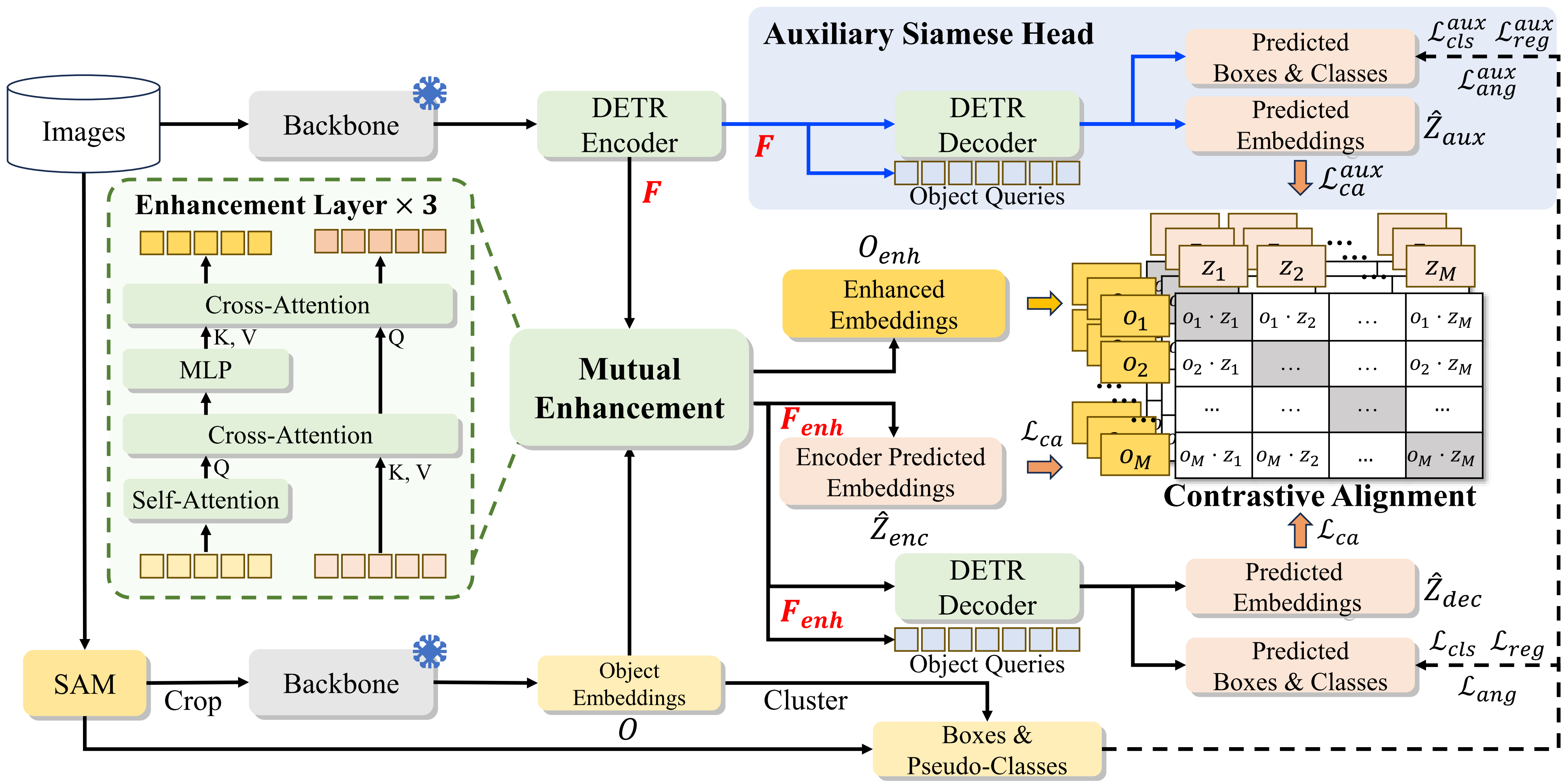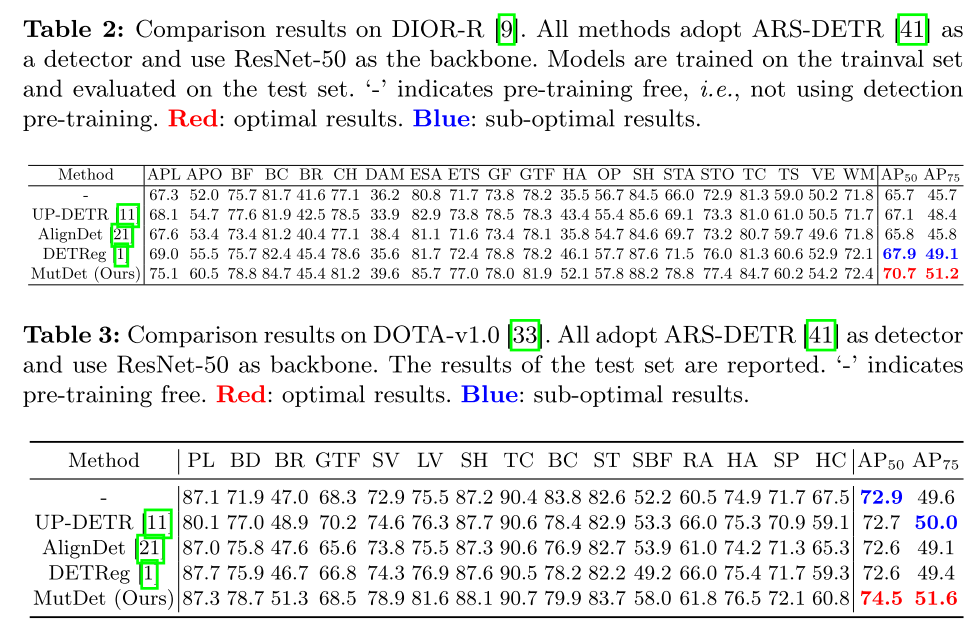Paper[Citing][Appendix] (under construction)
Welcome to the official repository of MutDet. In this work, we propose a pre-training method for object detection in remote sensing images, which can be applied to any DETR-based detector and theoretically extended to other single-stage or two-stage detectors. Our paper is accepted by ECCV 2024.
Please install Python dependencies Following ARS-DETR and Segment-Anything.
We will release it later.
Our pre-training framework consists of three steps:
- Pseudo-label generation: Using SAM to generate pseudo-boxes, extracting object embeddings using a pre-trained model, and clustring to get labels.
- Detection Pre-training: Keeping the backbone frozen and conducting detection pre-training.
- Fine-tuning: Fine-tuning on downstream data.
Due to the complexity of the data annotation process, we have decided to gradually improve this repository and release the code for reference in the meantime.
Generate a dataset split for manually parallel running SAM to generate pseudo-labels:
python ./Step1_Prepare_SAM_prediction/step1_1_partition_DOTA_800_600.pyUse SAM to autonomously generate pseudo masks:
python ./Step1_Prepare_SAM_prediction/step1_2_seg_DOTA_800_600.pyConvert these masks into rotated boxes using the minimum bounding box algorithm:
python ./Step1_Prepare_SAM_prediction/step1_3_mask_to_poly_DOTA_800_600.pyUse pre-trained ResNet-50 on ImageNet to extract object embeddings:
python ./tools/train.py ./configs/Step1_4_Prepare_extract_embeddings/Tool_DOTA_train_Feats.pyReduce the dimension of object embeddings using PCA, and cluster to obtain pseudo-labels
python ./Step1_Prepare_SAM_prediction/step1_5_cluster_and_make_pslabels.pyPre-training with MutDet framework:
python ./train.py ./configs/Step2_DetectionPretraining_Mutdet/MutDet_DOTA_Pretrain.pyFine-tuning with downstream dataset
python ./train.py ./configs/Step3_Finetuning/ars_detr_DIOR_MutDet.pyCheckpoints retained during the pre-training process can be directly used to initialize the detector. During initialization, warnings such as 'parameter mismatch' may occur, which is due to MutDet introducing additional modules and using a 256-dimensional classification head. However, the remaining parameters of the detector can be inherited normally, thus not affecting the pre-training effectiveness.
| Name | architecture | dataset | google drive | Baidu Cloud |
|---|---|---|---|---|
| MutDet | ResNet-50 | DOTA-v1.0 train | To do | download (wt0d) |
| MutDet | Swin-T | RSDet4 | To do | download (7wsd) |
If you use this toolbox in your research or wish to refer to the baseline results published here, please use the following BibTeX entries:
- Citing MutDet:
@misc{huang2024mutdet,
title={MutDet: Mutually Optimizing Pre-training for Remote Sensing Object Detection},
author={Ziyue Huang and Yongchao Feng and Qingjie Liu and Yunhong Wang},
year={2024},
booktitle={European conference on computer vision},
url={https://arxiv.org/abs/2407.09920},
}
